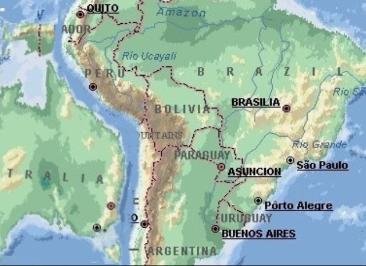Sort of, yes.
The situation is as follows: we know that there are unfilled niches, or inefficiently filled roles, in sufficiently large ecosystems, that have been more or less available for millions of years.
I was about to say, like what?
And there are species around in those ecosystems that have remained as they are, stable and not changing, right next to the niche so to speak, of kinds that have demonstrated the capability of filling that niche elsewhere,or that seem to be able to by all appearance.
The hummingbird role, for example,in Asia. The ant role,in Hawaii.
Asia does have bats, moths, and birds that fill that roll, though I'm not sure how well. I guess the best way to see if a roll is being filled "well" is to introduce a species and see if they establish themselves and/or out compete all the native wildlife.
We see this occurring all over the place with introduced species, of course.
So we suspect that the plateauing of evolution in a successful species is not necessarily due to constraint alone, not maintained solely by selection and culling of the less fit, in all cases.
It may be too "expensive" for a species to slide into another niche that is already filled (if you believe in the niche, myself, I'm not so confident it exists). Something else may already be filling that space, and the mutations to move into that niche would be to costly. Transitory mutations would reduce fitness in its already existing niche, and of course be subpar in comparison to what's already occupying the niche.
It's been shown that, with frogs, diversity correlates with the age of an ecosystem. It's been hypothesized that since tropical areas have remained habitable for the longest (since the last ice ages), they have greater diversity not because of more niche space, but simply longer time for things to diversify.
In places without "saturated niches," there's room for introduced species. And since all time in all places have been finite, due to the vagaries of chance, not all niches will be perfectly filled. I think the issue can be resolved as a problem due to population subdivision, not a molecular one.
As for Hawaii, the only bugs that could get out there were Dipterans. It was just too far out for other inects to get carried to. Ants never made it there.
For the ant niche to be "filled" you needed to take the Diptera, something with hundreds of millions of years of preadaptations, and turn it into an ant in 82 million years. Nevermind that the first Hymenoptera showed up in the Triassic period, and had some 170 million years before Hawaii even showed up to perfect being antlike. In fact, there were many ground dwelling insects that had come from orders that one wouldn't associate with certain types of behavior, that radiated to fill the empty niches. However, they only had 80 some MY, while any introduced insects had the benefit of several hundred million years at filling that niche.

